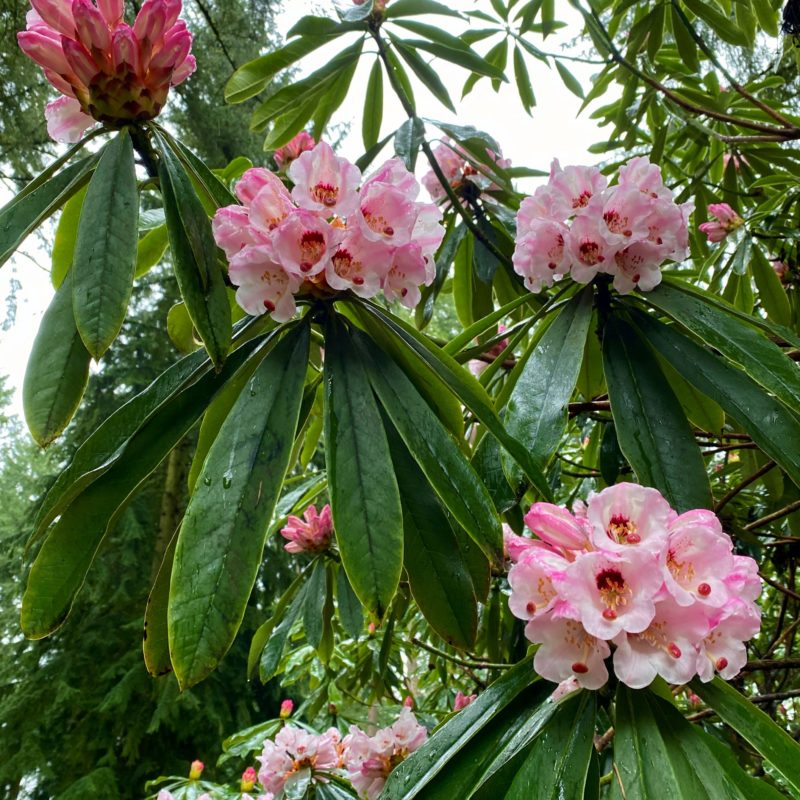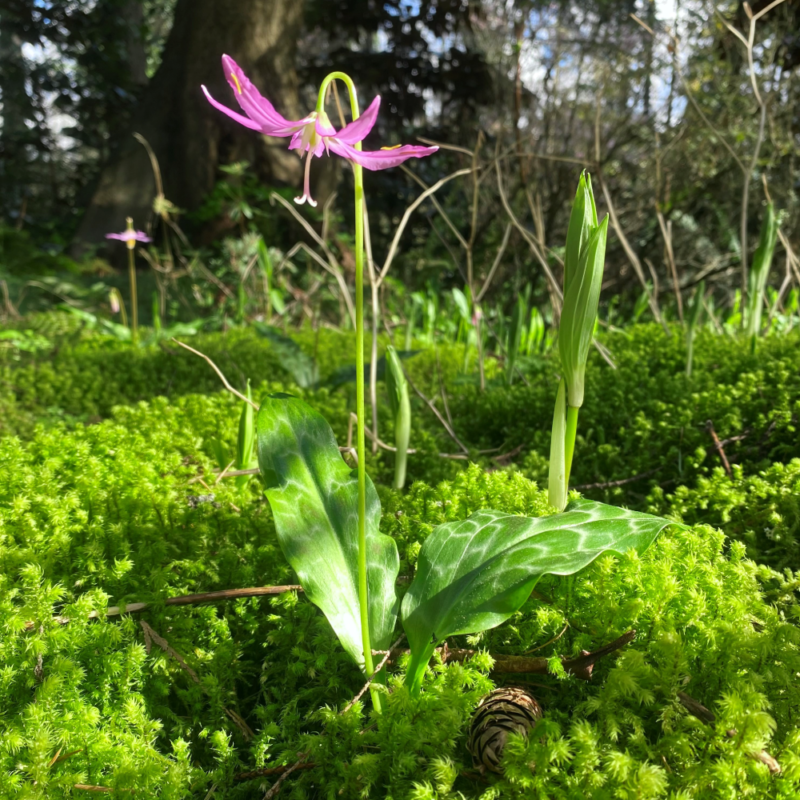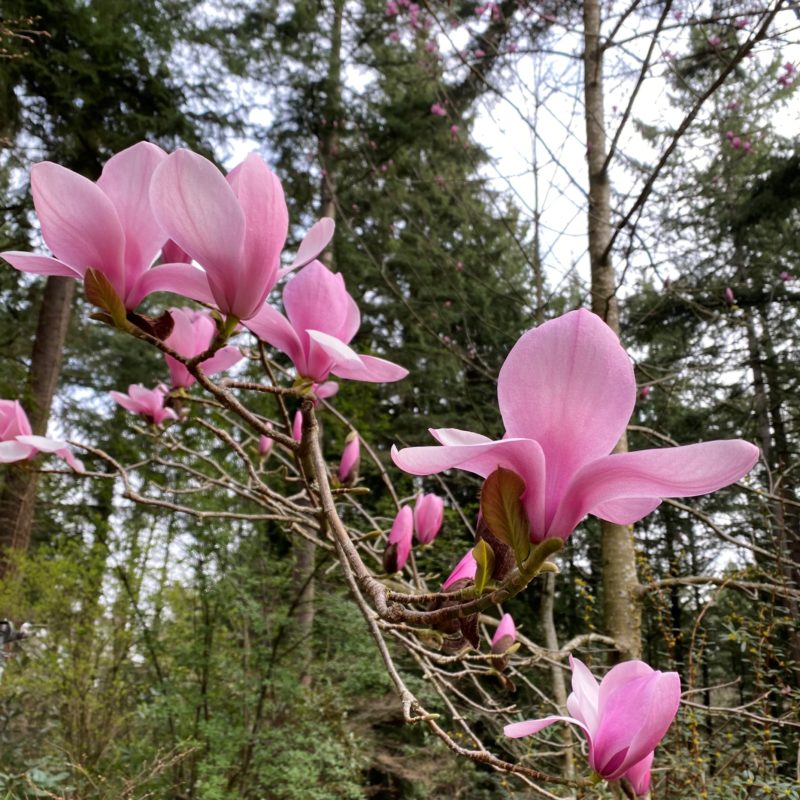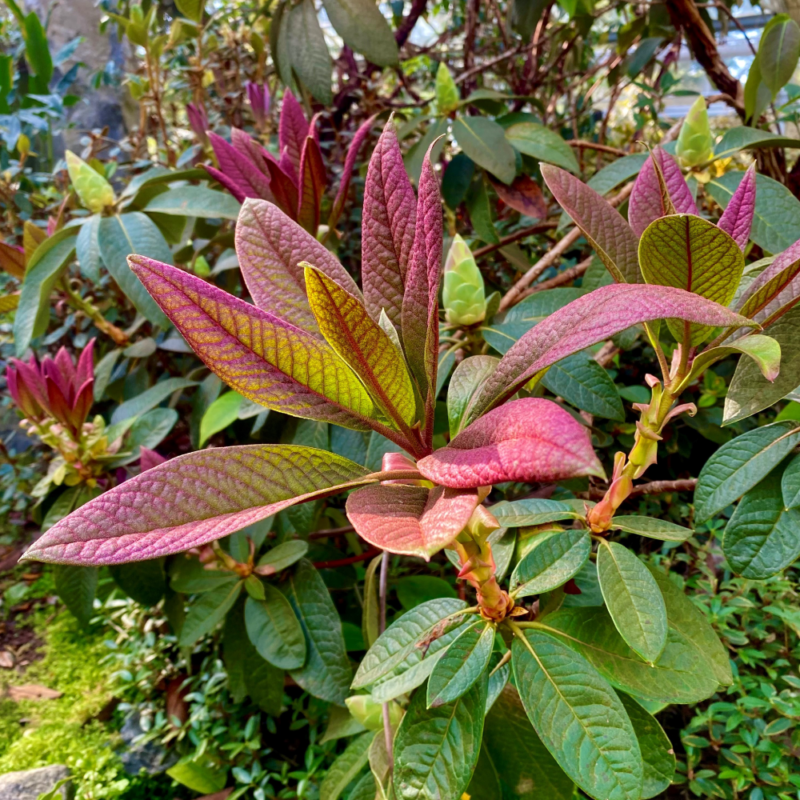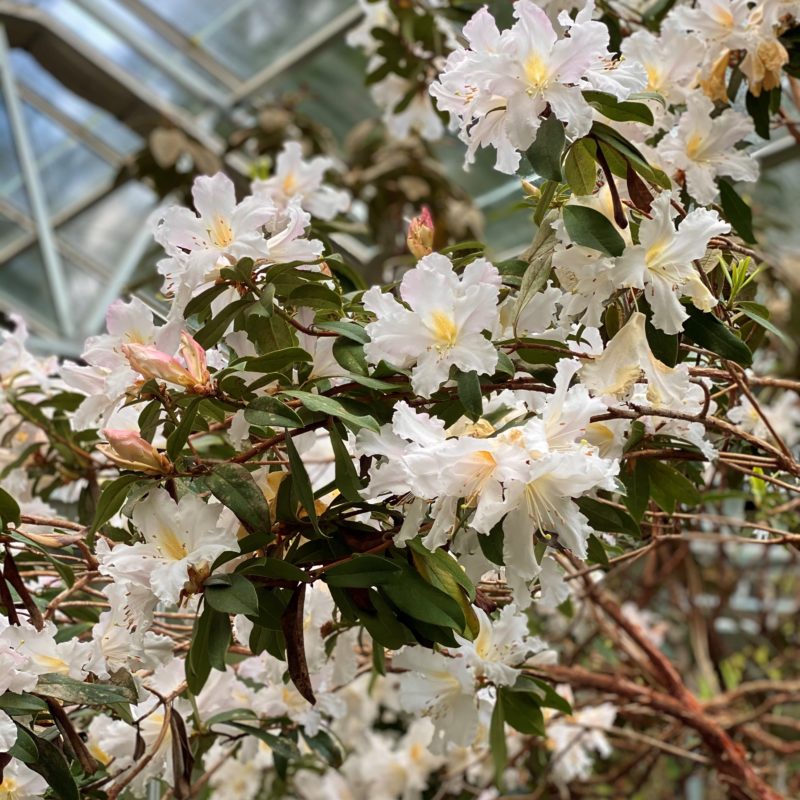March
by Emily Joseph
March at the garden is a month most known for its variable precipitation, temperature swings, and for being the reason we check the 10-day forecast repeatedly. Frequently extolled in weather lore and age-old adages, it seems like a time-honored tradition for the weather to fluctuate without any predictability. Yet, the balance of soil warming temperatures and cooling rainstorms brings the garden to life. Species rhododendrons begin a stellar show of flowering long before their hybrid offspring as woodland perennials, ephemerals, shrubs, and trees push out a cycle of new growth for spring.
Along the main path of the garden, the native flowering currant, Ribes sanguineum, is opening its pendulous jewel-like flowers in varying shades of deep pink, pale blush, and white. Fragrant winter hazels, Corylopsis, have unfurled masses of pale-yellow flowers dangling from wide spreading architectural branches before the emergence of leaves. Rhododendron calophytum, an impressive species with twelve-inch long, narrow foliage, is putting on a notably spectacular show of large pale pink and white striped trusses atop almost every branch terminal. Simply traversing the main loop of the garden will provide a showcase of early bloomers. Yet, throughout the course of the month, another hundred different species rhododendrons will be in peak bloom.
Stumpery
On the forest floor and up in the elevated plantings of the stumpery, ephemerals, and ferns are emerging. Erythronium revolutum, the Pacific Northwest native fawn lily, is sending out foliage of varying patterns in green, white, and burgundy in preparation for a display of delicate nodding pink blooms. The eastern native bloodroot – Sanguinaria canadensis ‘Multiplex’ will send out its rounded white double-flower and uniquely lobed leaves. Adiantum venustum, the Himalayan maidenhair fern is pushing up new fronds that delicately uncurl in shades of bronze and blush pink before maturing to soft green. Pause while sitting on the fallen tree bench, surrounded by Rhododendron strigillosum bejeweled with trusses of rich red. Or continue your investigation of epiphytic plants tucked into every nook of the many upturned stumps slowly decomposing into woodland soil to sustain these rare and delicate species.
Magnolia Collection
Though the name is indeed the Rhododendron Species Botanical Garden, our collection holds innumerable other fantastic woodland companion genera. One beloved genus found throughout the garden is a wide-ranging collection of magnolias. Some are still quietly dormant, but a few standout favorites will be shedding their velvety silken-haired bud scales for early spring blooms. In the May Garden, you’ll find Magnolia amoena, M. stellata, M. platypetala, and the highly fragrant Magnolia ‘Inspiration.’ Across the garden in the Upper Woodland, walk under a grouping of Magnolia obovata and if lucky, you’ll see the eye-popping vivid rose-pink flowers of the Magnolia sprengeri cultivar ‘Diva.’ Towards the center of the garden, the Magnolia Grove houses Magnolia sprengeri ‘Claret Cup,’ a darker pink flowering seedling from ‘Diva.’ The list goes on, but no matter when you visit us this spring, there will be some kind of magnolia magic happening.
Rutherford Conservatory
When asked what is most often lauded by the staff of the garden, many favorite features have nothing to do with flowers but are instead focused on foliage. As mentioned in the February feature, a stop into the Conservatory will deliver some of the most eye-catching new growth on display. Rhododendron nuttallii opens its large green buds to reveal glittering metallic magenta leaves that slowly darken to a rich bronze before turning green. Among the Agapetes, Himalayan blueberry relatives, both A. lacei and A. malipoensis are known for their long arching branches with new growth which emerges in rainbow-like shades of white, yellow, green, red, and pink. But for those set on seeing some blooms, you won’t find a better show than Rhododendron veitchianum, with a long flowering time and large white fragrant inflorescences that the Maddenia group of rhododendrons is known to exhibit.
Click on images below for full-size photos.
- Rhododendron calophytum
- Erythronium revolutum in the Stumpery
- Rhododendron strigillosum in the Stumpery
- Magnolia sprengeri ‘Diva’ in the Upper Woodland
- Magnolia sprengeri ‘Diva’ in the Upper Woodland
- Rhododendron nuttallii in the Conservatory
- Rhododendron veitchianum in the Conservatory

